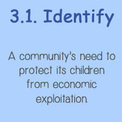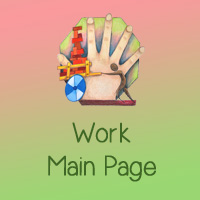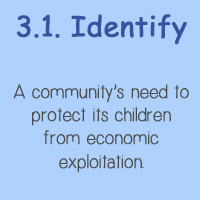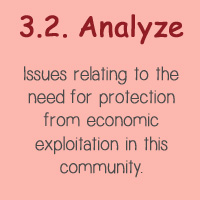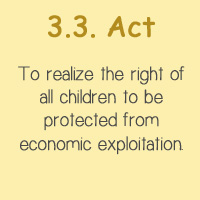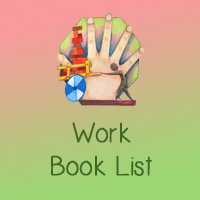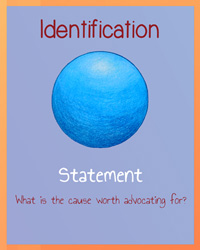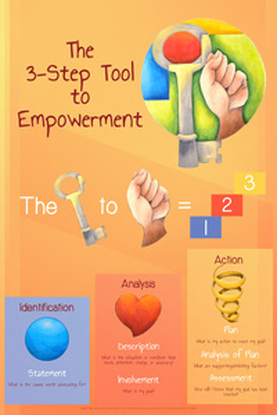Classroom Learning Activities
|
1. Identify a Community's Need for the Right to Work
Students refer to the 3-Step-Tool to Empowerment to identify a cause worth advocating for that relates to a community's obligation to protect every child from economic exploitation. This includes the following process:
|
Knowledge of rights guides the child to identify a cause worth advocating for.
|
Relevant Convention Articles
Article 12
1. States Parties shall assure to the child who is capable of forming his or her own views the right to express those views freely in all matters affecting the child, the views of the child being given due weight in accordance with the age and maturity of the child.
2. For this purpose, the child shall in particular be provided the opportunity to be heard in any judicial and administrative proceedings affecting the child, either directly, or through a representative or an appropriate body, in a manner consistent with the procedural rules of national law.
Article 13
1. The child shall have the right to freedom of expression; this right shall include freedom to seek, receive and impart information and ideas of all kinds, regardless of frontiers, either orally, in writing or in print, in the form of art, or through any other media of the child's choice.
2. The exercise of this right may be subject to certain restrictions, but these shall only be such as are provided by law and are necessary:
(a) For respect of the rights or reputations of others; or
(b) For the protection of national security or of public order (ordre public), or of public health or morals.
Article 14
1. States Parties shall respect the right of the child to freedom of thought, conscience and religion.
2. States parties shall respect the rights and duties of the parents and, when applicable, legal guardians, to provide direction to the child in the exercise of his or her right in a manner consistent with the evolving capacities of the child.
3. Freedom to manifest one's religion or beliefs may be subject only to such limitations as are prescribed by law and are necessary to protect public safety, order, health or morals, or the fundamental rights and freedoms of others.
Article 15
1. States Parties recognize the rights of the child to freedom of association and to freedom of peaceful assembly.
2. No restrictions may be placed on the exercise of these rights other than those imposed in conformity with the law and which are necessary in a democratic society in the interests of national security or public safety, public order (ordre public), the protection of public health or morals or the protection of the rights and freedoms of others.
Article 32
1. States Parties recognize the right of the child to be protected from economic exploitation and from performing any work that is likely to be hazardous or to interfere with the child's education, or to be harmful to the child's health or physical, mental, spiritual, moral or social development.
2. States Parties shall take legislative, administrative, social and educational measures to ensure the implementation of the present article. To this end, and having regard to the relevant provisions of other international instruments, States Parties shall in particular:
(a) Provide for a minimum age or minimum ages for admission to employment;
(b) Provide for appropriate regulation of the hours and conditions of employment;
(c) Provide for appropriate penalties or other sanctions to ensure the effective enforcement of the present article.
Article 33
States Parties shall take all appropriate measures, including legislative, administrative, social and educational measures, to protect children from the illicit use of narcotic drugs and psychotropic substances as defined in the relevant international treaties, and to prevent the use of children in the illicit production and trafficking of such substances.
Article 34
States Parties undertake to protect the child from all forms of sexual exploitation and sexual abuse. For these purposes, States Parties shall in particular take all appropriate national, bilateral and multilateral measures to prevent:
(a) The inducement or coercion of a child to engage in any unlawful sexual activity;
(b) The exploitative use of children in prostitution or other unlawful sexual practices;
(c) The exploitative use of children in pornographic performances and materials.
Article 35
States Parties shall take all appropriate national, bilateral and multilateral measures to prevent the abduction of, the sale of or traffic in children for any purpose or in any form.
Article 36
States Parties shall protect the child against all other forms of exploitation prejudicial to any aspects of the child's welfare.
1. States Parties shall assure to the child who is capable of forming his or her own views the right to express those views freely in all matters affecting the child, the views of the child being given due weight in accordance with the age and maturity of the child.
2. For this purpose, the child shall in particular be provided the opportunity to be heard in any judicial and administrative proceedings affecting the child, either directly, or through a representative or an appropriate body, in a manner consistent with the procedural rules of national law.
Article 13
1. The child shall have the right to freedom of expression; this right shall include freedom to seek, receive and impart information and ideas of all kinds, regardless of frontiers, either orally, in writing or in print, in the form of art, or through any other media of the child's choice.
2. The exercise of this right may be subject to certain restrictions, but these shall only be such as are provided by law and are necessary:
(a) For respect of the rights or reputations of others; or
(b) For the protection of national security or of public order (ordre public), or of public health or morals.
Article 14
1. States Parties shall respect the right of the child to freedom of thought, conscience and religion.
2. States parties shall respect the rights and duties of the parents and, when applicable, legal guardians, to provide direction to the child in the exercise of his or her right in a manner consistent with the evolving capacities of the child.
3. Freedom to manifest one's religion or beliefs may be subject only to such limitations as are prescribed by law and are necessary to protect public safety, order, health or morals, or the fundamental rights and freedoms of others.
Article 15
1. States Parties recognize the rights of the child to freedom of association and to freedom of peaceful assembly.
2. No restrictions may be placed on the exercise of these rights other than those imposed in conformity with the law and which are necessary in a democratic society in the interests of national security or public safety, public order (ordre public), the protection of public health or morals or the protection of the rights and freedoms of others.
Article 32
1. States Parties recognize the right of the child to be protected from economic exploitation and from performing any work that is likely to be hazardous or to interfere with the child's education, or to be harmful to the child's health or physical, mental, spiritual, moral or social development.
2. States Parties shall take legislative, administrative, social and educational measures to ensure the implementation of the present article. To this end, and having regard to the relevant provisions of other international instruments, States Parties shall in particular:
(a) Provide for a minimum age or minimum ages for admission to employment;
(b) Provide for appropriate regulation of the hours and conditions of employment;
(c) Provide for appropriate penalties or other sanctions to ensure the effective enforcement of the present article.
Article 33
States Parties shall take all appropriate measures, including legislative, administrative, social and educational measures, to protect children from the illicit use of narcotic drugs and psychotropic substances as defined in the relevant international treaties, and to prevent the use of children in the illicit production and trafficking of such substances.
Article 34
States Parties undertake to protect the child from all forms of sexual exploitation and sexual abuse. For these purposes, States Parties shall in particular take all appropriate national, bilateral and multilateral measures to prevent:
(a) The inducement or coercion of a child to engage in any unlawful sexual activity;
(b) The exploitative use of children in prostitution or other unlawful sexual practices;
(c) The exploitative use of children in pornographic performances and materials.
Article 35
States Parties shall take all appropriate national, bilateral and multilateral measures to prevent the abduction of, the sale of or traffic in children for any purpose or in any form.
Article 36
States Parties shall protect the child against all other forms of exploitation prejudicial to any aspects of the child's welfare.
Online Resources and References
- Doek, Jaap E. (2002) The CRC and the elimination of economic exploitation of children. International Conference "Stopping the economic exploitation of children: new approaches to fighting poverty as a means of implementing human rights?". Hattingen, Germany. Retrieved from http://www.jaapedoek.nl/publications/keynotes/keynote_261.pdf
- Free the Children - An international charity and education partner, working both domestically and internationally to empower and enable youth to be agents of change.
- Hesketh, Therese M, Gamlin, Jennie, Ong, Michelle, and Camacho, Angnes Zeneida V. (2012). The psychological impact of child domestic work: a study from India and the Philippines. Institute of Global Health. London, UK. Retrieved from: http://adc.bmj.com/content/97/9/773.full.pdf+html
- Leonard, Madeline. (2010). Children's Views on Children's Right to Work. Queen's University, Belfast. Retrieved from: http://chd.sagepub.com/content/11/1/45.abstract
- Woodhead, Martin. (1999). Combatting Child Labour: Listen to What the Children Say. Childhood. February 1999. (6)27-49
- UNICEF - Economic Exploitation of Children Special Discussion
- UNICEF - Protection of children from violence, abuse, and exploitation.


